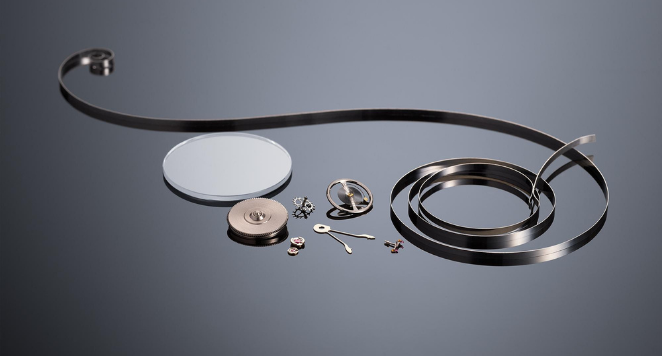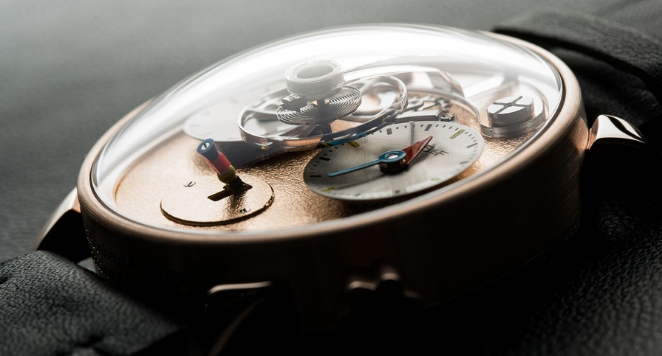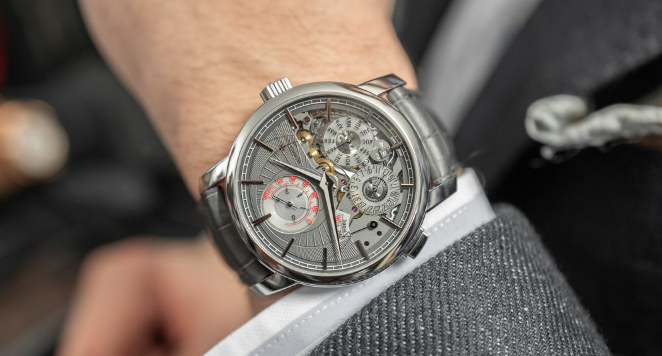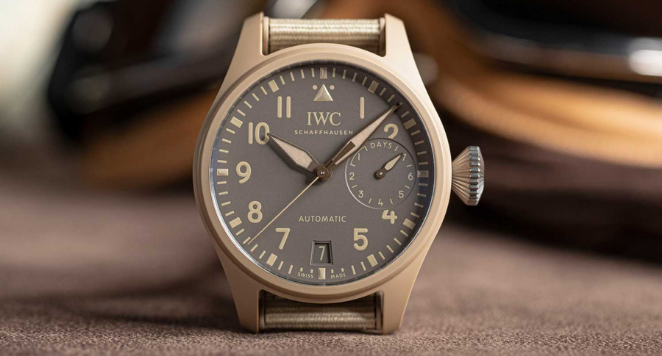Thanks to quartz watches, many of us don’t have to worry too much about our watch power reserve. After all, changing the battery every so often isn’t much of a hardship.
However, mechanical watches are different and their power reserves may vary from maker to maker. We’re going to take a closer look at watch power reserves and how they are important for wearers of mechanical watches.
How Do Power Reserve Watches Work?

Power reserve watches are mechanical and require winding up to work. Unlike a battery-powered or automatic watch, manual watches don’t tend to last long when not regularly wound.
If you think about it, a watch’s power reserve is as old as watchmaking itself. The reason clocks could shrink to pocket-sized timepieces was due to the creation of the coiled spring, which acts as an energy reserve.
Coiled springs started to be used in watchmaking in the 15th century. Before this period, clocks would use large mechanisms that relied on flowing water or pulleys to maintain their accuracy.
The coiled spring allowed for timepieces to shrink but they came at a cost; their power reserve. A coiled spring only has a finite amount of energy before it uncoils and becomes ineffective.
Once the spring of a watch uncoils itself, it’s a simple case of winding it back up and resetting the time.
How Long Does The Power Reserve Last?

The invention of the coiled spring allowed for portable timepieces which began with the pocket watch. While popular, the major drawback of a manual pocket watch was how long the power reserve would last.
Watches evolved to offer a power reserve of approximately 40-50 hours, which is enough for two days of use. However, many manual watch owners rewind their springs every day to ensure their timepiece is always running at the right time.
Common problems with power reserves in the early days of manual watches were in the mainsprings themselves.
If a watch was wound too tightly it would run fast at the beginning of its power. At the other end of the spectrum, watches were prone to running slowly as the mainspring began to reach the end of the coil.
That is why many mechanical watch owners with a limited power reserve will wind their watch every day. Modern advances in technology have done a lot to ensure an even uncoiling of watch springs which ensures their accuracy.
Officially, a watch power reserve is how long it will run from a complete winding of the mainspring until it stops.
Power Reserve Indicators

Today, knowing the power reserve of your watch is one thing but many of us wish to have a display to let us know exactly where we are at. These displays often come in the form of a chronograph watch, with a dedicated dial for the power reserve.
You can think of a power reserve indicator like the battery display of a smartwatch. Your smartwatch only has a finite life cycle before the battery needs charging, and the same goes for manual and automatic wind-up watches.
With these reserve displays, power reserve automatically is on show and you’ll know if it’s time to rewind your mainspring or not. The power reserve indicator can be thought of like a fuel gauge for your watch.
It features more and more often in modern manual watches as aside from its functionality, it makes a watch feel more complex. The diver watch power reserve is also becoming more popular because you really don’t want your watch to stop working underwater.
While it is common for watch power reserves to be displayed in radial form, some watchmakers are looking to provide further innovations. Some reserve displays come in straight lines, three-dimensional colour schemes and linear scales.
Watches With The Longest Power Reserves

While it was common for two-day reserves of power in the past, in modern reserves have greatly increased. In fact, some watchmakers have gone to great lengths to ensure their mechanical watches last a very long time.
The honour of mechanical watch with the longest power reserve goes to Vacheron Constantin and its Traditionnelle Twin Beat Perpetual Calendar. This special watch has an energy reserve of a colossal 65 days.
That eclipses the next-best competitor, the Hublot Masterpiece MP-05 LaFerrari, which offers 50 days of power reserve. However, these watches with additional power reserves are often expensive and require special winding tools.
There aren’t many watches that offer this level of power reserve and it’s more common for modern manual timepieces to come with around seven days in the bank. Winding your watch once per week instead of every day is a vast improvement to those of the past.
Keeping Your Mechanical Watch Running

One of the downsides of manually rewinding your watch is letting the movements stop working for long periods. This can affect the accuracy of your watch but regularly winding it up, even if you aren’t using it will keep it in good working order.
We suggest winding your manual watch at least once per month. If you have the added bonus of a clear case back, you can witness the mechanism while you wind.
We think the modern advances in power reserve should be celebrated, even if the mainstream watch industry has shifted its focus towards automatic watches.
The more people’s luxury watch collections grow the less useful a self-winding feature becomes. With people wearing their watches in rotation, having a reserve display is perfect for assessing whether your watch needs winding or not.
Uniform Wares Watches
Here at Uniform Wares, we bring contemporary, minimalist British design to Swiss-made movements. Our watches are created in London and are available around the world.
The creative process takes place in-house and our watches have made their mark on the watch industry. Our watches have featured in the likes of GQ, Esquire, and T3. If you’re looking for a new watch why not stop by our collection of men’s, women’s and unisex watches?
